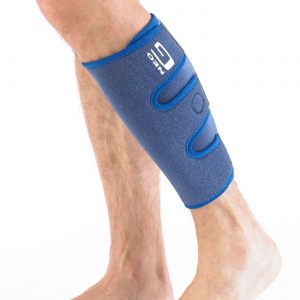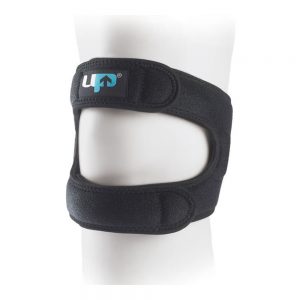The Commonwealth Games got under way on Wednesday, and while the 71 nations come together to joyously celebrate Britain’s colonial past, we thought it would be a good time to remind you of some common track and field, cycling and general injuries.
It was the beloved Prince Charles who kicked off the pomp and ceremony part, accompanied by his wife Camilla, both of whom looked surprisingly underwhelmed to be reminding 70 countries and territories of the British Commonwealth that they once, or still do, reign over them.
That ceremony took part in the host city of Gold Coast, on which 4,500 athletes will descend to compete for medals in 18 different sports. And they are as follows:
Aquatics, athletics, badminton, basketball, beach volleyball, boxing, cycling, gymnastics, hockey, lawn bowls, netball, rugby sevens, shooting, squash, table tennis, triathlon, weightlifting and wrestling.
The headlines here are that beach volleyball, despite balls and Aussies being a contentious issue of late, makes its debut, while sports like archery, cricket, fencing and judo have been dropped from the line-up.
There’s also a positive note for equality as an equal number of men’s and women’s medals will be awarded for the first time ever in any major, multisport event.
Speaking of medals, the battle for the top of the medal table once again looks set to be contested between England, who won in 2014 with 58 gold medals(174 overall), and Australia, who finished runner up in Glasgow with 49 gold(137 overall).
Fresh off the back of several individual championships such as the IAAF World Indoor Championships and the UCI Track Cycling World Championships, many of the athletes are in the midst of a tough schedule where the injury risk can be high.
That’s because training and competing in events like triathlon, cycling and the track and field events, of course, does not come without risk and significant chance of overuse injuries if your schedule isn’t properly managed, so we thought we’d share some common injuries the athletes at the Commonwealth Games are almost certain to have dealt with at some point.
Let’s get to it…
Plantar Fasciitis
What is it?
Plantar Fasciitis produces foot pain over the inside of the heel and this usually radiates down the inside of the sole of the foot. This foot pain usually occurs with activity and is also typically present in the morning when taking the first steps of the day.
Plantar Fasciitis can be diagnosed by a doctor or physiotherapist, if pain is present on touching the affected area, and/or on stretching the Plantar Fascia (by pulling the toes up). The diagnosis of Plantar Fasciitis can be confirmed on an ultrasound scan, when the fascia has a thickened appearance. In a small number of cases of heel pain, that fails to respond to normal treatment, it may be necessary to get an x-ray to rule out other conditions such as a bony spur on the heel bone or a fracture of the heel bone.
Prevention
Inadequate footwear is often implicated in Plantar Fasciitis. Shoes should provide adequate support for the foot. Unsuitable footwear can increase strain of the Plantar Fascia and lead to the development of inflammation.
Insoles that support the arch on the inner side of the foot can be helpful for limiting excessive pronation and relieving stress on the Plantar Fascia and Achilles tendon.
Perfect for Plantar Fasciitis are Enertor Insoles, endorsed by none other than Usain Bolt himself. To find out more about the benefits of Enertor insoles, read our blog.
Treatment
Plantar Fasciitis is inflammatory in nature and the key to successful treatment is to determine what is causing the inflammation and address this problem. In most sporting individuals the cause is overuse and the most important advice is to allow adequate rest, to take the strain off the Plantar Fascia and allow the affected tissues time to heal. The Aircast AirHeel can be very effective in the treatment of Plantar Fasciitis. The AirHeel reduces strain on the Plantar Fascia and applies pulsating compression with every step to help reduce swelling and discomfort, and enhance circulation.
Runner’s Knee
What is it?
IlioTibial Band Friction Syndrome is so prevalent in runners that it is commonly known as ‘Runner’s knee’. It affects up to 10% of all runners at some stage.
Typically there is pain located on the outerside of the knee joint. This pain may radiate up the thigh or down the outerside of the shin and is exacerbated by running. Usually, the knee pain from Runner’s Knee is only present during activity and settles when the person rests. However, in some cases it can also be extremely uncomfortable going up or down stairs.
Prevention
Runner’s Knee is an overuse condition that is aggravated by excessive training. Make sure that you gradually increase your training load there should be no sudden increases in workload as this can overload the tissues. Tightness in the IlioTibial Band has been implicated so stretching the Gluteus Medius and Tensor Fascia Latae muscles may be helpful as a preventative measure.
Similarly increased pronation of the foot (uncontrolled lowering of the arch) can lead to increased tension in the IlioTibial Band when running. Motion controlling running shoes that prevent excessive pronation can be effective in reducing this cause of increased IlioTibial Band tension. Alternatively an insole that supports the arch of the foot can help to control excessive pronation.
Treatment
Because Runner’s Knee is inflammatory in nature, then ice packs and Non Steroidal Anti Inflammatory medication (NSAIDs) prescribed by your doctor are effective in the early stages.
Physiotherapy treatment is very effective in alleviating Runner’s Knee. Once the inflammatory soreness has been resolved a physiotherapist will assess posture and lower limb alignment in order to give specific stretching and strengthening exercises to treat the underlying cause of the problem.
You can also try the Ultimate Performance Ultimate Runners Knee Strap. The multi-purpose knee strap uses a combination of upper, lower and side compression to combat pain and discomfort in the knee, while giving the wearer support and protection against further injury.
With its adjustable straps, this corrective support can be worn on the left or right knee to tackle quad mis-alignment.
‘Shin Splints’
What is it?
Shin Splints is a common term for pain in the shin region. It can be a misleading term and most sports medicine professionals try to avoid using it. This is because shin pain and ‘Shin Splints’ can be due to several different conditions. One of the most common shin conditions that gets labelled ‘Shin Splints’ is Medial Tibial Stress Syndrome.
Medial Tibial Stress Syndrome is fairly common in runners. People suffering from Medial Tibial Stress Syndrome will feel shin pain on the inner side of the shin during exercise and also at rest. It is important to consult a sports doctor who can distinguish Medial Tibial Stress Syndrome from other causes of shin pain (‘Shin Splints’) such as Compartment Syndrome and stress fracture.
Prevention
The amount of stress being placed on the shins can be minimised by wearing good quality, supportive running shoes with shock absorbing insoles. It is possible that some cases of Medial Tibial Stress Syndrome could be prevented by correcting problems such as flat feet (excessive pronation) with arch supports.
Treatment
Most patients respond well to treatment with a chartered physiotherapist. This involves rest, strengthening and stretching exercises, followed by a gradual return to running after symptoms subside. In order to help prevent recurrence of the condition, a bio-mechanical analysis (an analysis of posture at rest and during walking and running) is very useful.
For example, a common cause of the condition is excessive pronation during running. This would be identified during bio-mechanical analysis and corrected with arch supporting insoles.
Many people find that a Neo G Calf/Shin Splint Support is useful in alleviating shin pain. Featuring three adjustable straps to allow for an individual fit and comfort, the Neo G calf/shin support provides dynamic compression and support to the entire calf.






